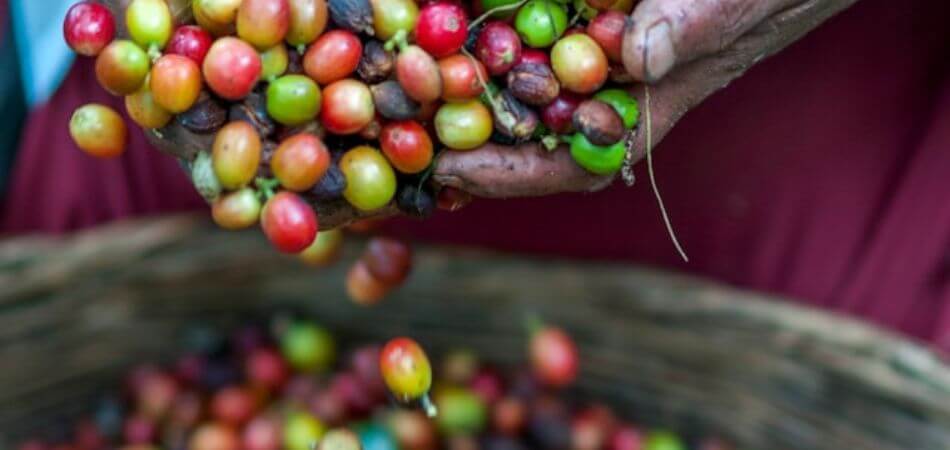Best Tips on How to Store Green Coffee Beans for Optimal Quality
You’ve just scored a batch of premium green coffee beans—raw, unroasted, and full of potential. But here’s the catch: if you don’t store them right, all that delicious flavor could vanish before you even fire up your roaster.
Green coffee beans are alive. They slowly release gases and absorb odors, meaning poor storage leads to:
- Mold & mildew (from moisture)
- Stale, flat flavors (from oxygen exposure)
- Pest infestations (yes, bugs love coffee too)
Whether you’re a home roaster or a coffee shop owner, this guide will teach you exactly how to store green coffee beans to keep them fresh, flavorful, and ready for roasting. Let’s dive in!

Ideal Storage Conditions for Green Coffee Beans
Storing green coffee beans isn’t rocket science, but it does require the right environment. Here’s what you need to control:
A. Temperature: Keep It Cool (But Not Cold)
- Best range: 50–70°F (10–21°C)
- Why? Too hot → beans dry out. Too cold → condensation risks.
- Avoid: Storing near ovens, windows, or heaters.
B. Humidity: The Silent Bean Killer
- Ideal humidity: 50–60% RH (use a hygrometer to monitor).
- Too humid? → Mold grows.
- Too dry? → Beans lose moisture and crack prematurely.
- Fix: Silica gel packs or moisture-controlled storage.
C. Light & Air Exposure
- Light: UV rays degrade beans → always store in darkness.
- Air: Oxygen speeds up staling → airtight containers are a must.
✅ Pro Tip: If your storage area fluctuates in temp/humidity, use insulated storage (like a wine cooler).
Best Containers for Storing Green Coffee Beans
Not all containers are created equal. Here’s a breakdown:
| Container Type | Best For | Pros | Cons |
|---|---|---|---|
| GrainPro Bags | Short-term (3–6 months) | Breathable, pest-resistant | Not fully airtight |
| Food-Grade Buckets | Medium-term (6–12 months) | Airtight, stackable | Bulkier, needs Gamma Seal lid |
| Vacuum-Sealed Bags | Long-term (12+ months) | No oxygen, preserves freshness | Requires vacuum sealer |
| Glass/Stainless Steel | Small batches | Non-reactive, easy to clean | Heavy, not ideal for bulk |
What to Avoid:
❌ Plastic bags (not airtight, traps moisture)
❌ Jute sacks alone (unless in a dry climate)
❌ Open containers (invites pests & odors)

Where to Store Green Coffee Beans
Location is everything. Here’s where (and where not) to keep your beans:
✅ Good Spots:
- Pantry (cool, dark, stable temp)
- Wine cooler (consistent climate control)
- Cellar (if humidity is controlled)
❌ Bad Spots:
- Garage/Basement (humidity & temp swings)
- Fridge (condensation risk)
- Near spices/strong smells (beans absorb odors)
Freezing Green Coffee Beans?
- Pros: Extends shelf life (if vacuum-sealed).
- Cons: Moisture risk when thawing → only freeze in small, sealed portions.
Preventing Mold & Pests
Nobody wants moldy or bug-infested beans. Here’s how to keep them safe:
A. Pest Prevention
- Use sealed containers (no gaps for bugs).
- Add natural deterrents:
- Bay leaves
- Cedar blocks
- Food-safe diatomaceous earth
B. Mold Prevention
- Check humidity (keep it 50–60%).
- Use silica gel packs (absorbs excess moisture).
- Inspect regularly (look for white fuzz or musty smells).

How Long Do Green Coffee Beans Last?
| Storage Method | Shelf Life | Flavor Retention |
|---|---|---|
| Room temp (ideal conditions) | 6–12 months | Excellent (first 6 months) |
| Vacuum-sealed | 12–24 months | Very good |
| Frozen (properly sealed) | 2+ years | Good (some flavor loss) |
Signs Your Beans Have Gone Bad:
- Musty or sour smell → Mold likely present.
- Discoloration (white/green spots) → Fungus or mildew.
- Insect debris → Time to toss the batch.
Pro Tips for Coffee Roasters & Enthusiasts
Want to maximize freshness? Follow these expert tricks:
✔ Buy in smaller batches (only what you’ll roast in 3–6 months).
✔ Label & date your bags (FIFO = First In, First Out).
✔ Rotate stock (older beans get roasted first).
✔ Use oxygen absorbers (for ultra-long storage).
Conclusion: Store Smart, Roast Better
Now you know how to store green coffee beans the right way! Remember:
- Control temp & humidity (50–70°F, 50–60% RH).
- Use airtight containers (GrainPro, buckets, or vacuum bags).
- Avoid pests & mold (seal tight + check often).
By following these steps, you’ll preserve flavor, avoid waste, and roast the best coffee possible.
🔥 Ready to roast? Start by storing your beans properly—your future self (and your taste buds) will thank you!
Frequently Asked Questions For How To Store Green Coffee Beans
How Long Can You Store Green Coffee Beans?
Green coffee beans can be stored for up to one year if stored properly in a cool, dry place.
What Is The Best Way To Store Green Coffee Beans?
The best way to store green coffee beans is in an airtight container, away from light, moisture, and heat.
Can You Freeze Green Coffee Beans For Storage?
Freezing green coffee beans is not recommended as it can affect the flavor and aroma. Stick to cool, dry storage instead.
How Do You Know If Green Coffee Beans Have Gone Bad?
Green coffee beans that have gone bad will have a sour or musty smell, and they may appear discolored or moldy.
Can You Store Green Coffee Beans In The Fridge?
Storing green coffee beans in the fridge is not recommended as it can introduce moisture and affect the quality. Stick to cool, dry storage.







